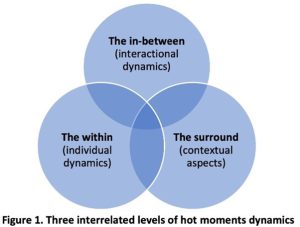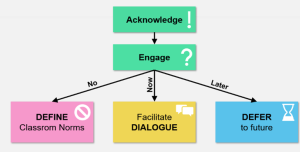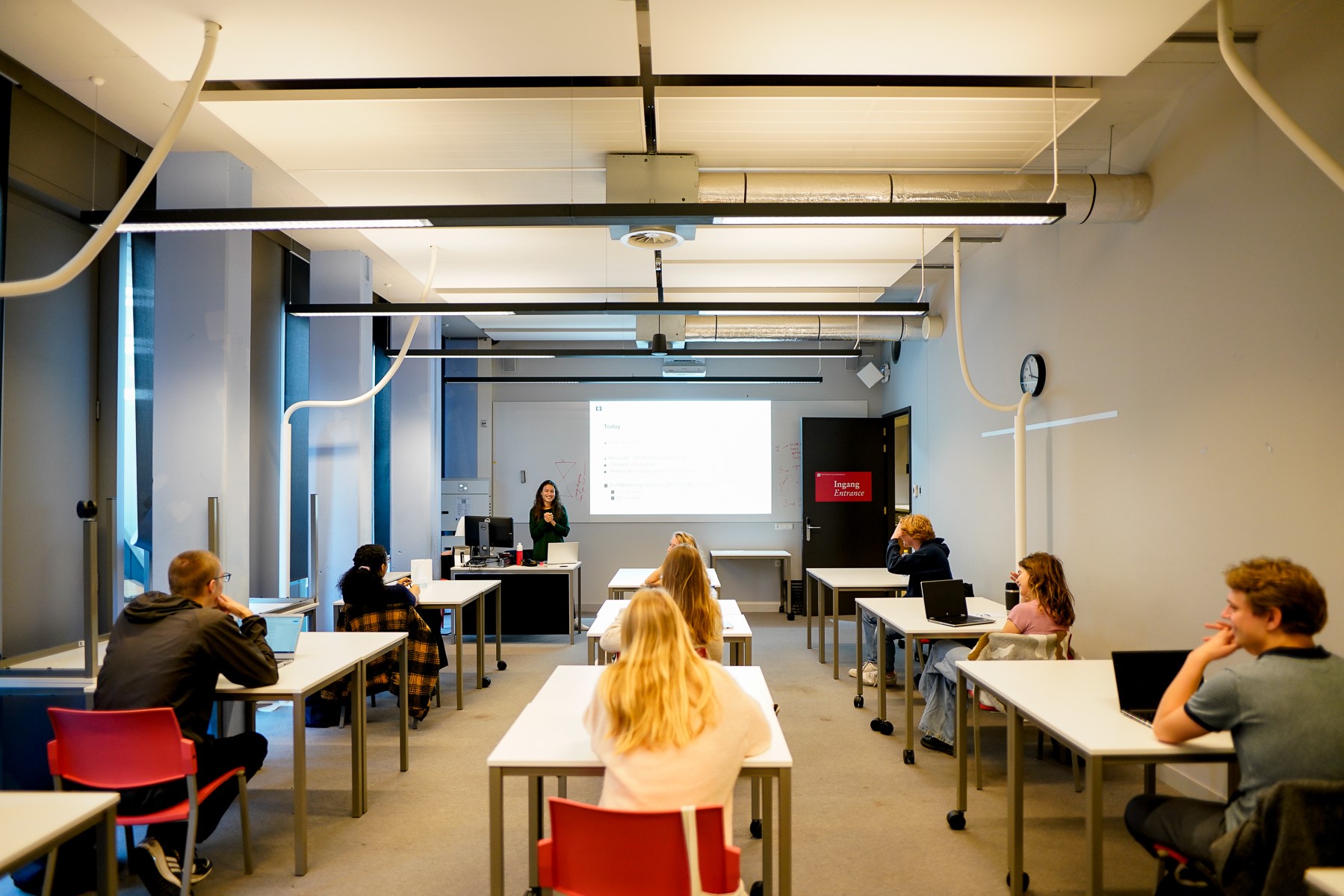
Watch: Knowledge-sharing session about Hot moments
In times of global conflict and an increasing sense of polarisation in our society, UvA teachers are increasingly confronted with ‘Hot moments’ in the classroom. These are uneasy, or even unsafe, situations where the views of one collide with the integrity of another. This may occur during discussions on sensitive topics, but can also be the result of classroom dynamics. Hot moments have the potential to derail a classroom and cause harm to those involved. At the same time, a Hot moment can also be an illuminating teaching opportunity. That is why the Teaching & Learning Centre (TLC Central) and the Central Diversity Office (CDO) together organised a knowledge-sharing session for teachers. This session offered various tips and tools to turn hot moments into rewarding learning experiences. On this article page, you can read a recap of the session, read about the most important tips and tools, and watch the recording of the session.
Directly below follows a written recap of the session. Would you like to watch the recording of the session? Or would you like to instantly read about the most important tips? Then take a look under ‘Tips & tools’.
Recap of the Hot moments knowledge-sharing session
In SPUI25, UvA employees with different functions from several faculties gathered for the knowledge-sharing session. Interested people who could not physically attend also joined the session online. In fact, the session was organised at short notice and to facilitate the level of interest, the session is offered in a hybrid form. The interest in the session immediately underlines the importance of the Hot moments theme.
Hot moments occur when people’s feelings run so high that teaching and learning are threatened (Warren 2006). This can happen at 3 different levels and sometimes Hot moments take place at different levels simultaneously (Ramdas et al., 2019).
- The within: the individual dynamics
- The in-between: the interactional dynamics
- The surround: the contextual aspects.
Establishing ground rules to guide a dialogue
It is not a new concept, but teachers and other staff are increasingly confronted with Hot moments. And yet they often lack the tools to deal with them adequately. During this knowledge-sharing session, speakers Erjo Beitler (TLC Central) and Machiel Keestra (CDO) wanted to provide attendees with these tools to anticipate these critical moments. Erjo acknowledges that it presents difficult situations for teachers: “We have now clearly identified Hot moments as an important topic. Certainly, the development of the conflict between Israel and Hamas often proves to create these kinds of moments. There are a lot of emotions involved and everyone reacts differently to this. Some people are eager to discuss the issue and others are not. The aim of the session is to give you some guidance in managing heated discussions. This way, you can also support other colleagues in this regard.”
“We want to allow everybody to have a say and ask everyone to listen carefully to each other.”
But before the session starts, Erjo and Machiel emphasise that an open and respectful atmosphere is essential. “These are often sensitive topics and we want to allow everybody to have a say and ask everyone to listen carefully to each other,” Erjo says. The chairs in the front of the room are also positioned in a circle to create an ‘inner circle’. Within the circle, everyone can look each other in the eye and really interact. Erjo also sets some ground rules: “Before a discussion can take place, everyone must know where they are at. And that everyone understands what is and what isn’t acceptable during a discussion. This applies today, but above all, apply these ground rules during your classes.”
You can find the ground rules under Tips&Tools.
Institutional context within the UvA regarding Hot moments

“That academic freedom of teachers within the classroom is based on scientific insights and thoroughly substantiated arguments.”
Machiel continues, “To somewhat regulate our dealings with such events as an academic community, you will also find information on academic freedom on the crisis page. This is also an important aspect of dealing with Hot moments. As the UvA, we want to adopt a neutral stance to minimally restrict the academic freedom of individual teachers – and students.” “The academic freedom of teachers particularly applies to expertise within their own discipline,” Machiel continues. “That academic freedom of teachers within the classroom is based on scientific insights and thoroughly substantiated arguments. In addition, we also have a code of conduct that we must adhere to within the UvA. Of course, we want the campus to be a safe place for everyone at all times. Therefore, demonstrations and protests should not take place inside our buildings, but outside in the public space: otherwise, that very academic freedom will again be compromised. This exceeds the behaviour of teachers and in turn, affects the university as a whole. For instance, during demonstrations, it might be better to refrain from taking action to prevent escalations. In this respect, academic exchange also includes attention to multiple perspectives – so in this case there should be room for contributions from both a Pro-Palestinian and a Pro-Israeli perspective.”
Find more on academic freedom and resources within the UvA in the slides under Tips&Tools.
Personal experiences and tips from Erjo while dealing with Hot moments
In addition to the broader institutional context, the human aspects and personal experiences are essential when dealing with sensitive issues. Erjo and Machiel therefore take the time to share their own experiences and insights with attendees. “I had a very difficult time dealing with Hot Moments,” Erjo says. “Sometimes I completely froze and didn’t really know what to say. On the contrary, others react very strongly when they disagree with something or when they feel a sense of injustice.”
“We want to work towards a safe learning environment with discomfort.”
Erjo stresses that making mistakes is not a bad thing either: ” It’s alright to experiment and to occasionally make mistakes. It’s impossible to feel comfortable all the time. We want to work towards a safe learning environment with discomfort. Therefore, it’s vital to collaboratively establish rules with your students beforehand. Doing so may not be easy either, but you need to know that you can trust each other before dealing with a sensitive topic.” “Ask yourself in advance what you want to achieve with the discussion. For many people, the first association with a discussion is a TV debate. Here, speakers try to convince each other and the goal is always to formulate your own opinion. Whereas in the classroom, it can be valuable to look for common ground and have a dialogue. In this case, listening carefully is the most important thing. So, be specific to your students about the goals of the discussion and how those goals can be achieved.
“Don’t be afraid to fail.”
Finally, Erjo explains that we should acknowledge our differences and that we should employ multiple forms of communication: “There are a lot of inequalities between people and it is okay to recognise those. Also, learn about yourself and try to understand how you might come across to your students. Use different methods to express yourself and interact with students. Ultimately, the key is to acknowledge perspectives, after which you can address them. Always try to facilitate a dialogue and don’t be afraid to fail. If emotions really spiral or if there is insufficient time, you can always defer the dialogue. Then return at another time, this also provides everyone time to reflect.”
You can find all of Erjo’s tips under Tips&Tools.
Personal experiences and tips from Machiel while dealing with Hot moments
When Machiel shares his personal experiences, he also underlines the importance of acknowledging and addressing difficult topics. “If such topics are not discussed in the classroom, people feel ignored and excluded. This has a very demoralising and even depressing effect. So dialogue is really important, but we must avoid forcing people to take positions within conflicts. This could result in polarisation again, which is not desirable.” “So again, the key is to genuinely listen to people. Please don’t ask them to take a stance, but ask about personal experiences and emotions. The exchange and acknowledgement of personal and emotional struggles is perfectly possible without falling into political or historical discussions,” Machiel adds.
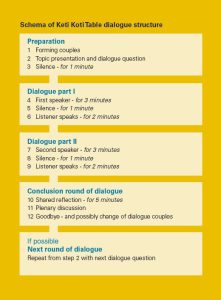
Machiel also mentions other approaches to facilitate the right dialogue and to create the right ‘space’: ” We don’t need a culture of silence where people are afraid to speak up because they are afraid of insulting someone else. Therefore, try to create a ‘brave space’, where everyone is instead encouraged to speak up. At the same time, however, everyone should express themselves with respect and empathy. Within this ‘brave space’, people with different perspectives can interact. They may have very different experiences and that can also be valuable. But, often, similar emotions emerge from the different perspectives.”
“We have often received the feedback, also from students, that people had never had such an attentive and trustworthy conversation with an unfamiliar interlocutor.”
Machiel also offers tangible tools for discussing sensitive topics based on a Keti Koti Table he co-developed: “To facilitate a dialogue on Keti Koti (abolition of slavery and its aftermath), we created a dialogue structure in advance. An important element within this structure is to allow the speaker to finish talking and then taking an additional minute of silence to reflect before responding. We have often received the feedback, also from students, that people had never had such an attentive and trustworthy conversation with an unfamiliar interlocutor.”
“Art itself can of course be controversial, but in my experience, art is very valuable when dealing with Hot Moments.”
Machiel concludes by pointing out the power of art: “Don’t limit covering Hot moments to the usual academic subjects and sources. It’s also impossible to always possess all the required knowledge and highlight all possible perspectives yourself. Different art forms can be of great service. Art itself can of course be controversial, but in my experience, art is very valuable when dealing with Hot moments. Literature and film, for instance, offer a good way to introduce a topic. Films from different parts of the world often succeed well in highlighting those different perspectives and thus facilitating the dialogue we want.”
You can find all of Machiel’s tips under Tips&Tools.
Ending with an open dialogue
The knowledge-sharing session ends with an open dialogue between the various teachers and other UvA employees present. In turn, they openly share personal experiences with Hot Moments. These experiences are diverse, but the attendees agree that they often didn’t know how to manage these situations and that they were left with rather unpleasant feelings. In doing so, they underline the importance of the ‘take-aways’ they say they have gained from this session. “Today was very empowering for me and I gained a lot of helpful insights from this session. Among the tips given, there are also some quick fixes that I can use and pass on to colleagues and students,” says one attendee. Another adds: “I am definitely going to introduce intermissions so that everybody will have time to reflect on things. I think that delaying discussions by giving students homework on the topic and returning to the topic at a later time is a really useful suggestion. I will also look into which forms of art are suitable to cover as homework.”
” In the end, you can only create a safe environment if you also feel safe yourself.”
To conclude, the attendees underline the importance of clear agreements and a safe environment. “If you do indeed use ground rules, you could always rely on this if someone lashes out and says something inappropriate. You can then use this as a learning opportunity and clearly explain why it is inappropriate. You can also involve others in explaining why something is inappropriate. After all, if you feel something is happening in the classroom, students will definitely sense something. And in the end, you can only create a safe environment if you also feel safe yourself.”
Tips&Tools
- Our goal is to understand each other, not to convince each other.
- Respect each others’ identities, perspectives and boundaries.
- Confidentiality.
- Don’t interrupt.
- No personal attacks.
- Avoid generalisations.
- Assume positive intent.
- Define clear rules for interaction, together with your students.
- Create opportunities to get to know each other and build trust.
- Define your goals and expectations in discussions.
- Encourage active listening.
- Use different ways of expression.
- Learn to recognize (subtle) inequalities.
- Know yourself and how you come across.
- Use the ‘Oops, ouch’ technique.
- Take a breath, slow down.
- Postpone your judgement.
- ‘Move to the balcony’ and create an overview.
- No reaction is also a reaction.
- Hot moments can be valuable learning opportunities.
- Try to read the ‘subtext’ of comments.
- Take the issue off the student.
- Give a writing task.
- A dialogue ≠ discussion.
- Check-out.
All tips, tools and sources can be found in the presentation.

Machiel Keestra is an assistant professor and has also been the Diversity Officer at UvA since February 2022. He is committed to promoting equal rights, inclusion and diversity within the university.
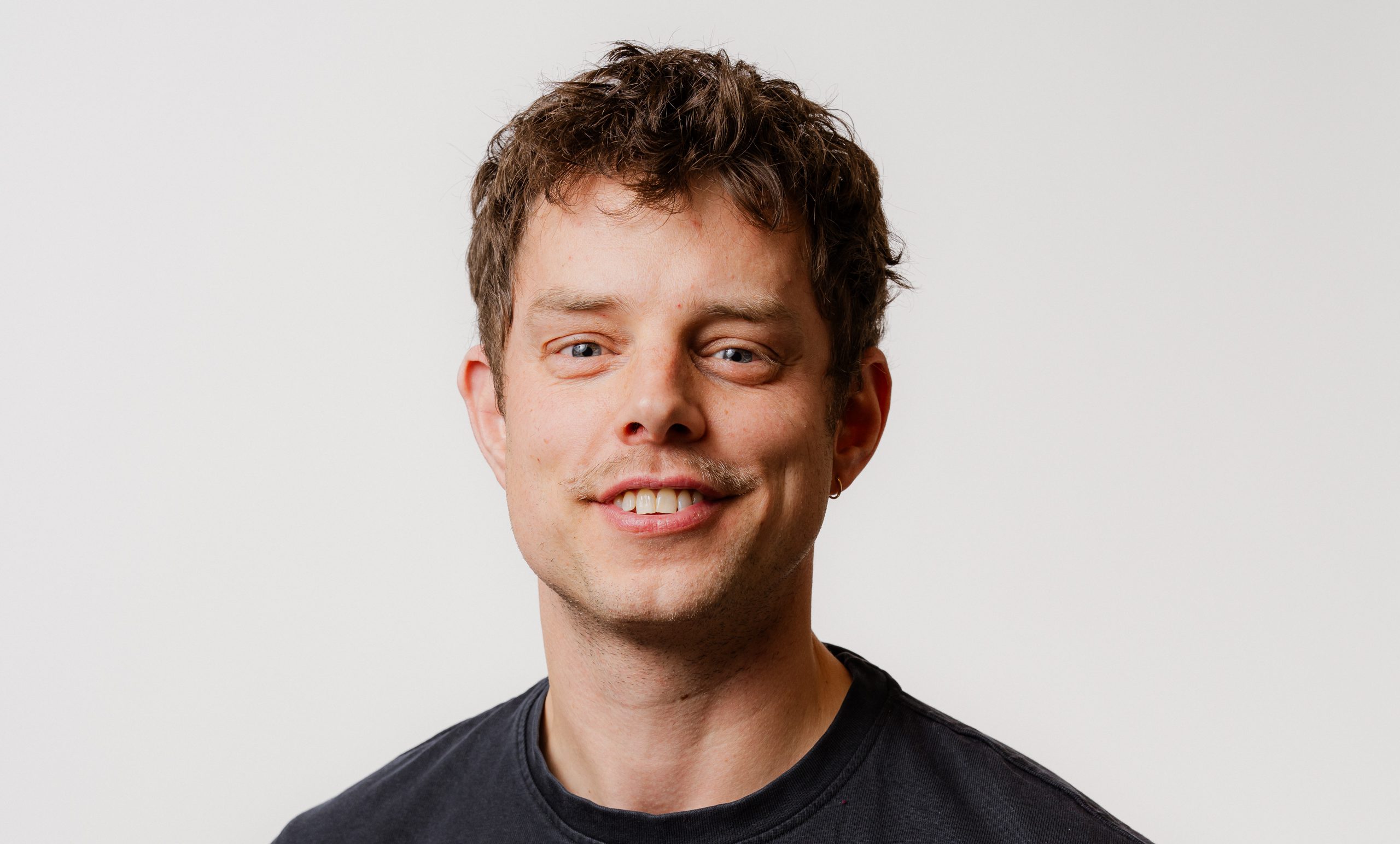
Erjo is a didactic advisor and trainer at TLC Central. Among other things, he gives BKO training to teachers and has gained significant experience with Hot Moments from his own teaching practice.






